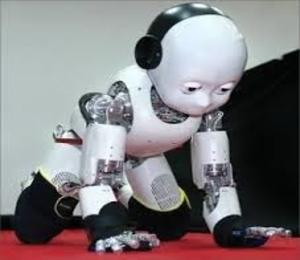Personal and service robots are extraordinarily advanced compared to the ones developed a decade ago. However, the size of the personal and service robot market has not grown much, betraying the industry experts’ predictions that the market would rapidly expand within a decade. This arouses a research question why today’s personal and service robots are not sold despite of all the technological advancements and anticipations. In order to find appropriate form of a robot to be accepted by customers in market, we explored the effect of robot design approaches on the consumers’ acceptance of robots by comparing a human-like robot and a product-like robot. A human-like robot is the type of a robot which resembles the appearances and behaviors of humans while a product-like robot, which is the identical concept of an intelligent product, is the type of a robot which has a similar form of everyday products with robotic functionalities, for example, a vacuum cleaning robot. As a result, participants categorized a human-like robot as a robot and a product-like robot as one of the existing product categories, and a product-like robot was more effective than a human-like robot for consumers’ evaluation and purchase intention toward robots. Based on the empirical study which validated the impact of the product-like robot, we will introduce several product-like robots we have developed as follows: The Lampy is an intelligent ball which gets charged by using the piezoelectric element when children kick the ball at day, and at night turns into a light by shining with the charged energy. The HangulBot is intelligent blocks which detect the arrangement of blocks and generate the pronunciation of the Korean syllables made by the blocks. The SlipperBot is intelligent slippers, which detect people’s footstep by pressure sensors and alert people with sound feedback for inducing people not to make floor noise. The PiggyBankBot is an intelligent piggy bank which gets fattened when it detects people’s dropping coins to motivate saving. The UmbrellaBot is an intelligent umbrella which detects humidity and notifies if the probability of precipitation exceeds 50% by LED light feedback. The FrameBot is an intelligent light frame which perceives the inclination of the frame by a tilt sensor and displays if the frame is tilted by LED light feedback to mitigate the inconvenience when hanging a frame on the wall to check the frame for level.
Full Day Workshop (in Conjunction with Humanoids 2015 - South Korea - November 3, 2015)


